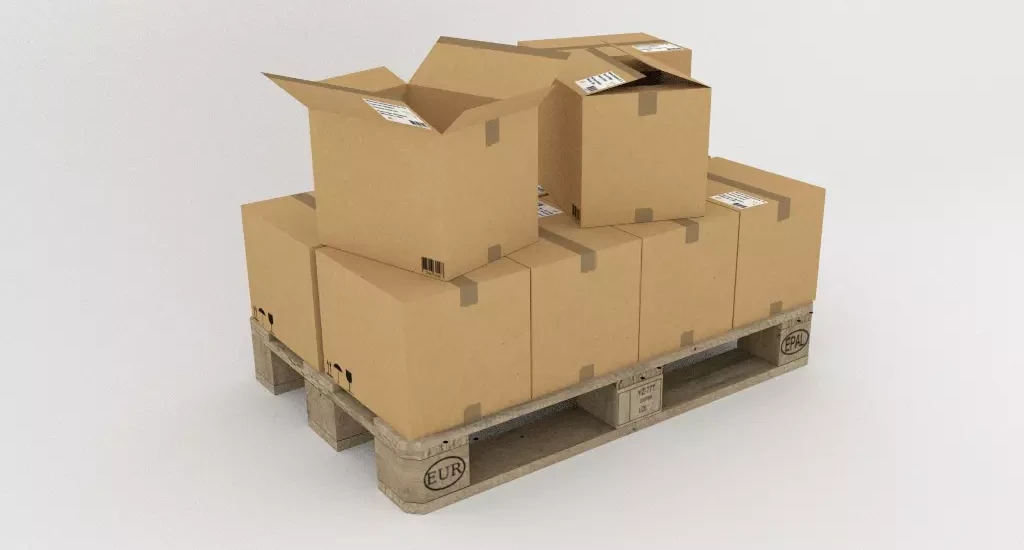General cargo is an integral part of today’s global trade. These include a variety of products such as furniture, electronics, clothing and more. Unlike containerized cargo, general cargo is not carried in one large container, but is packaged separately and can be of different sizes and shapes. In this article, you will learn about the different types of general cargo and how to manage them effectively.
Understanding the different types of general cargo
There are many different types of general cargo that can be encountered during international transport. Some of the most common are:
- Consumer products: such as clothing, electronics, household items, etc.
- Spare parts: parts for cars, machines, etc.
- Industrial materials: such as steel, aluminum, chemicals, etc.
- Food and food products: such as fruits, vegetables, meat, milk, etc.
Each of these types of general cargo has its own requirements and specifications for packaging, labeling and transportation. Therefore, it is important to understand these differences and adapt your logistics processes to the specific type of general cargo.
The importance of proper packaging and labeling
Proper packaging and labeling are crucial for the safe and efficient transport of general cargo. Well-packaged and labeled cargo minimizes the risk of damage during transport and facilitates its identification and location in warehouses and terminals.
When packing general cargo, adequate protection against shocks, moisture and other external factors must be ensured. In the case of delicate and easily damaged items, such as glass or electronics, it is worth using additional protective materials, such as foam, bubble wrap or special cardboard boxes. It is also important to remember about the proper location and securing of the load inside the packaging to minimize the risk of movement during transport.
The labeling of general cargo is equally important. Each package should be labeled with information such as the recipient’s name, destination address, instructions for fragile or dangerous items, and reference and tracking numbers. Appropriate labeling can significantly increase the efficiency of the logistics process, avoiding mistakes and facilitating the identification of loads during transport.
Tips for efficient loading and unloading of general cargo
Efficient loading and unloading of general cargo is crucial for maintaining the smoothness of the logistics process. Here are some tips to help you make these operations more efficient:
- Plan ahead: Prepare an accurate loading and unloading plan, taking into account the sequence and arrangement of loads. This will allow you to optimize the use of space and time.
- Use the right tools: Use the right tools and equipment, such as forklifts, cranes, or grabs, to facilitate the loading and unloading of heavy or bulky items.
- Organize space: Make sure you have a properly organized loading space to allow easy access to each load. You can use shelving, containers or pallets to keep things tidy and minimize the risk of damage.
- Train employees: Train your employees on safe and efficient loading and unloading of general cargo. Knowing the proper techniques and procedures will help you avoid accidents and damage.
- Use technology: Take advantage of modern technological solutions, such as tracking and monitoring systems, which will enable you to monitor and locate general cargo on an ongoing basis. This will facilitate management and provide greater transparency in the logistics process.
Choosing the right method of transporting general cargo
Choosing the right method of transporting general cargo is crucial for the effective and efficient movement of goods. There are many options to choose from, depending on the distance, type of cargo and delivery time.
One of the most popular methods of transporting general cargo is road transport. This is especially useful for short routes or local deliveries. Road transport offers flexibility and speed, but can be less cost-effective and environmentally friendly.
Another popular method is sea transport. It is the best option for long intercontinental routes. Sea transport is usually cheaper than road transport, but has a longer delivery time. For general cargo that is not urgent, sea transport can be the perfect solution.
Air transport is the fastest, but also the most expensive. This is the best option if you need express delivery or if you are carrying valuable and fragile items that require special attention. However, due to high costs, air transport is not always profitable for general cargo.
Other options are rail transport and containerized water transport. Each of these methods has its own advantages and disadvantages, so it is worth thinking carefully about choosing the right method depending on your needs and requirements.
Risk management and ensuring the safety of general cargo
The risk associated with the transport of general cargo is unavoidable, but it can be minimized by appropriate actions and procedures. Managing risk and ensuring the safety of general cargo should be a key element of your logistics strategy.
Here are some tips to help you manage risks and keep your general cargo safe:
- Choose a reliable supplier: Only work with reputable suppliers who are experienced in handling general cargo. Check their testimonials and reviews to make sure your goods are in good hands.
- Use the right security: Secure your loads with the right security, such as straps, nets and anti-slip materials. Make sure they are securely fastened and meet the relevant safety standards.
- Monitor and track: Leverage monitoring and tracking systems to keep track of your loads at all times. Thanks to this, you will know where they are and you will be able to react quickly in case of irregularities.
- Insure your cargo: It’s worth investing in insuring your general cargo. This will provide you with financial protection in the event of damage, theft or loss of goods.
- Regular Inspection and Maintenance: Regularly inspect your vehicles, equipment and packaging to ensure they are in good condition and meet safety requirements. Performing maintenance and repairs at regular intervals will help avoid breakdowns and damage.
Documentation and formalities related to the transport of general cargo
The transport of general cargo requires appropriate documentation and formalities. Failure to comply with these requirements may lead to delays, financial penalties or even loss of goods. Here are some key documents and formalities to be familiar with:
- Commercial Invoices: This is the basic document that confirms the contents of the shipment, the value of the goods and details of the recipient and supplier. Commercial invoices are necessary for customs and accounting purposes.
- Waybills: The waybill is a document that confirms the conclusion of the transport contract between the sender and the carrier. It contains information about the cargo, reference number, sender and recipient addresses and transport conditions.
- Customs declarations: When transporting general cargo between countries, it is necessary to submit a customs declaration. The customs declaration contains information about the type of goods, value, country of origin and destination, as well as information about the sender and recipient.
- Certifications and permits: Depending on the type of cargo, special certifications or permits may be required, such as health certificates, quality certificates or permits for the transport of hazardous materials. Make sure you have the appropriate documents before proceeding with the transport.
- Insurance: It is also worth securing your general cargo with appropriate insurance.
The term groupage transport means various smaller loads:
The shipper is responsible for preparing the load for transport (packaging).

What does the cooperation process look like?
1. CONTACT
Please contact us for details of the order
2. QUOTATION
Within 1 hour you will receive a quote from us for the reported transport
3. AGREEMENT
We sign a contract for the transport of your goods
4. REALIZATION
Realization of the ordered transport
Advantages of working with us:
